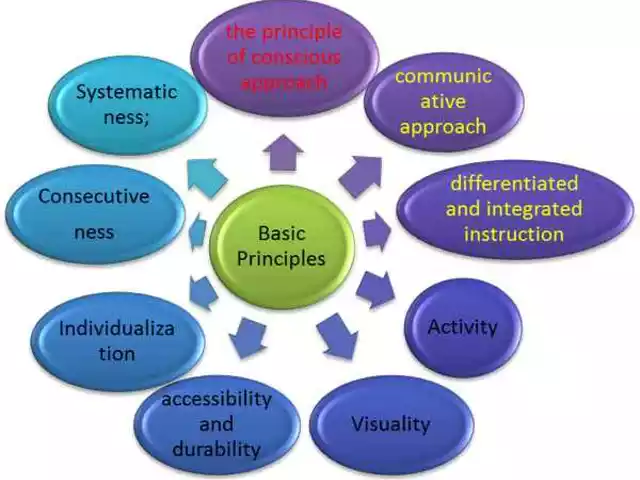Higher education is becoming increasingly expensive for students and families. The cost of college tuition and fees has been rising for decades, and students are often left with the burden of high debt levels and the need to take out loans to pay for their education. This can make it difficult for students to pursue their educational goals and can be a major obstacle in their attempt to attend college.
The cost of college tuition and fees has been steadily increasing since the 1980s. In the past decade alone, tuition and fees at public and private universities have increased by over 60%. This has created a financial burden for many students who are unable to cover the costs of college without taking out loans. For those who are able to take out loans, they often find themselves with a huge financial burden of debt, which can be difficult to manage.
The rising cost of college is a major problem facing higher education today. The cost of college tuition and fees is preventing many students from pursuing their educational goals, and it is creating a financial burden for those who are able to attend college. It is important for universities and policymakers to address this issue and to find ways to make college more affordable for students so that they can pursue their educational goals without having to take on a huge financial burden.
The lack of diversity in higher education is a serious issue that affects all aspects of student life. It is an issue that has been largely ignored for too long, and it is time that we take a closer look at its impact. Diversity in higher education is not only important for creating an inclusive environment, but also for creating a more diverse student body.
When we think of diversity in higher education, we often focus on race and ethnicity. However, it is important to remember that diversity goes beyond this. Diversity in higher education also includes gender, sexual orientation, socio-economic status, and many other factors. The lack of diversity in higher education can lead to a lack of understanding and respect for different backgrounds and perspectives. This can lead to a hostile environment, where some students may feel excluded or unwelcome.
The lack of diversity in higher education also has a negative impact on the quality of education. Students from diverse backgrounds often bring unique perspectives and experiences to the classroom. When these perspectives are lacking, it can lead to a narrow view of the world and a lack of understanding of different cultures. This can lead to an educational environment that is not as stimulating or engaging for all students.
Finally, the lack of diversity in higher education can also have a negative impact on the job market. Employers are increasingly looking for graduates who have diverse backgrounds and experiences. If there is not enough diversity in higher education, employers may not be able to find the best candidates for the job.
The lack of diversity in higher education has a significant impact on students and the quality of education they receive. It is important that we work to create a more inclusive and diverse learning environment, so that all students can benefit from the experience.
Technology is having a deep impact on the way higher education is delivered. Technology is increasingly being used to create more innovative and accessible learning opportunities, but it’s also creating new challenges for educators and students alike.
One of the most significant impacts of technology on higher education is the increased competition for students. With the rise of online learning, students have a much greater range of options when it comes to choosing a college or university. This means that schools must find new and innovative ways to engage their students, as well as to stand out from the competition.
Technology has also changed the way students learn. With the proliferation of online courses and other digital learning platforms, students are increasingly able to access course material and interact with their peers online. This has created a more flexible learning environment, but it also comes with its own set of challenges. For example, online learning can be isolating and can lack the personal connection that traditional classroom settings can provide.
Finally, technology has had an impact on the way educators teach. With the introduction of digital tools, teachers are increasingly relying on technology to replace traditional methods of teaching. This can be beneficial in some cases, as it can help teachers to better engage with their students and make learning more interactive. However, it can also lead to a decrease in the quality of interactions between students and teachers, as technology can become a substitute for genuine learning.
Overall, technology has had a profound impact on higher education, both positively and negatively. It has allowed students to access learning opportunities more easily and has made learning more flexible, but it has also created new challenges for educators and students.
Higher education is an essential part of life. It is a pathway towards a successful career and a brighter future. Unfortunately, the quality of higher education is often called into question. Are students getting what they pay for?
The cost of higher education has steadily increased over the years. It is now more expensive than ever to attend college or university. This has led to an increase in student debt and a decrease in the quality of education received. Many students feel they are not getting the quality of education they paid for.
The quality of higher education is also in question due to the lack of resources available to students. Class sizes are often too large, making it difficult for students to get the one-on-one attention they need. There are also not enough instructors available to teach classes, leading to overcrowded classrooms. This can make it difficult for students to learn the material.
The quality of higher education is also hampered by a lack of diversity in faculty. Many universities have a majority of white faculty members, making it difficult for students from minority backgrounds to feel accepted and to have their needs met. This can lead to a lack of understanding and respect for different cultures and perspectives.
Overall, the quality of higher education is in question. Students are paying more money for an education that simply does not meet their needs. It is important for universities to invest in resources and faculty that can provide students with a quality education that meets their needs and prepares them for the future.
Accessibility to higher education is a major issue in today’s society. Many students across the world are unable to attend college due to financial constraints, lack of support from family or friends, or other barriers. In addition to this, there are many students who are unable to attend college because they are not adequately prepared or lack the skills necessary to succeed in college. All of these issues can make higher education inaccessible to many students.
The first step in making higher education more accessible is to remove the financial barrier. For many students, the cost of tuition is too high and they are unable to attend college. This is why many colleges and universities offer scholarships, grants, and other forms of financial aid to help students pay for tuition. In addition, there are numerous organizations and foundations that offer free or low-cost education and training. These resources can help make higher education more accessible to those who may not be able to afford it.
The second step in making higher education more accessible is to provide adequate support for students. Many students need guidance and support in order to succeed in college. This is why many colleges and universities offer academic advisors, career counselors, and other forms of support for their students. These resources can help students make informed decisions about their education and career path, as well as provide them with the necessary resources to succeed in college.
Finally, it is important to improve the quality of education. Many students in lower income areas have access to lower quality education, which can make it difficult for them to succeed in college. This is why many colleges and universities are making efforts to provide higher quality education to all students, regardless of their economic background. This can help make higher education more accessible to all students.
Making higher education more accessible is an important issue, and it is one that requires a concerted effort from all stakeholders, including governments, universities, and private organizations. By increasing access to financial aid, providing adequate support for students, and improving the quality of education, we can make higher education more accessible to all students.






